



Choose Your Muse is a series of interviews where Marc Garrett asks emerging and established artists, curators, techies, hacktivists, activists and theorists; practising across the fields of art, technology and social change, how and what has inspired them, personally, artistically and culturally.
Ryota Matsumoto is a principal and founder of an interdisciplinary design office, Ryota Matsumoto Studio, and an artist, designer and urban planner. Born in Tokyo, he was raised in Hong Kong and Japan. After studies at Architectural Association in London and Mackintosh School of Architecture, Glasgow School of Art in early 90’s, he received a Master of Architecture degree from University of Pennsylvania in 2007. Before establishing his office, Matsumoto collaborated with a cofounder of the Metabolist Movement, Kisho Kurokawa, and with Arata Isozaki, Cesar Pelli, the MIT Media Lab and Nihon Sekkei Inc. He is currently an adjunct lecturer at the Transart institute, University of Plymouth.
Marc Garrett: Could you tell us who has inspired you the most in your work and why?
Ryota Matsumoto: As I have collaborated with the founders of the Metabolist movement of the 60s, Kisho Kurokawa and Arata Isozaki, and had the opportunity to meet Cedric Price at Bedford Square, I am keenly aware of the participatory techno-utopian projects by the Situationist International group. Some of the projects by Japanese Metabolism, Yona Friedman, and Andrea Branzi drew inspiration from the concept of unitary urbanism and further developed their own critical perspectives. Their work has helped me to create my own theoretical platform for the status quo urbanism and its built environment.
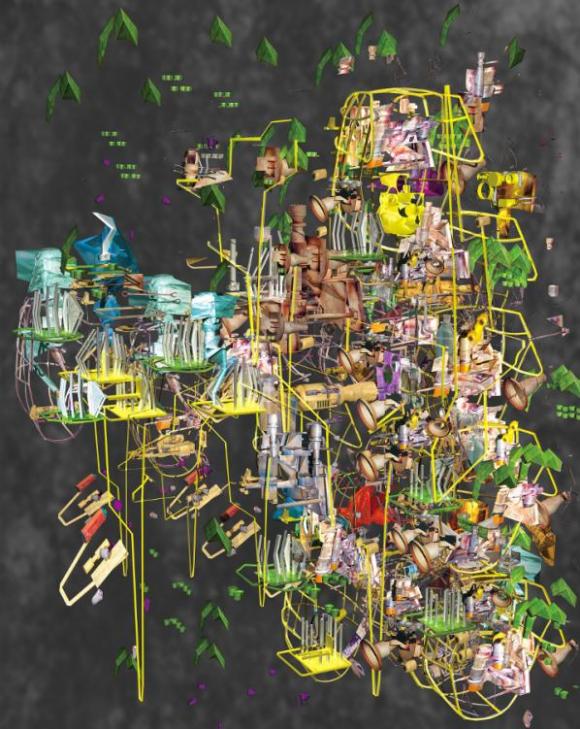
MG: How have they influenced your own practice and could you share with us some examples?
RM: I identify with the free-spirited and holistic approaches of these theorists on the relationship between language, narrative, and cognition. They embraced a wide range of media for visual communication that simultaneously defied categorization as either art or architecture and denounced the rigid policy-driven urban planning. Who would have thought of using photomontage, computer chips, PVC, or anything else they could get their hands on for architectural visualization in those days? Furthermore, their urban strategy of mobile/adaptable/expandable architecture and the theory of psychogeography dérive resonate with my own creative thinking. I interpret urbanization as the outcome of self-generating, spontaneous and collective intelligence design process and believe that the strategic use of hybrid media with incorporation of multi-agent computing provides an alternative approach for both art and design practice.
MG: How is your work different from your influences and what are the reasons for this?
RM: The utopian aspirations of the groups in the 60s were very much the product of the counter-cultural movement of the time: they were politically engaged and had optimistic outlooks for technology-driven progress of cities. In contrast, while I tend to address the current socio-cultural agendas of urban and ecological milieus, my work doesn’t necessarily evoke or represent the utopian or dystopian visions of spatial cities.


MG: Is there something you’d like to change in the art world, or in fields of art, technology and social change; if so, what would it be?
RM: I explore and question both sustainable and ethical issues of the urban environment that have been influenced by the socio-political realities of the Anthropocene, using visual/cognitive semantics, analogical reasoning, and narrative metaphors. As human population and energy use have grown exponentially with great acceleration, the interactive effects of the planet transforming processes on the environment are impending issues that we have to come to terms with. Thus, my projects hinge on how trans-humanism, the emergence of synthetic biotechnology, and nano-technological innovations can help us respond to the current ecological crisis.
“The themes of my work hinge on how the scientific tenets of trans-humanism, the emergence of synthetic biotechnology and Nano technological innovations might respond to the Anthropocene epoch, and, eventually foster critical thinking in relation to the underlying agendas of the increasing dominance of human-centric biophysical processes and the subsequent environmental crisis.” [1] (Matsumoto 2017)
With my recent work, the symbiotic interplay of the advanced biosynthetic technologies and the preexisting obsolete infrastructures has been explored to search for an alternative trajectory of future environmental possibilities. In short, new technologies can complement old ones instead of completely replacing them, to avoid starting over from a blank slate or facing further ecological catastrophes.
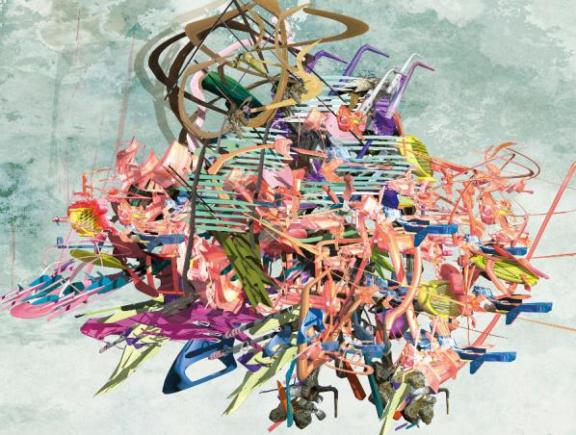
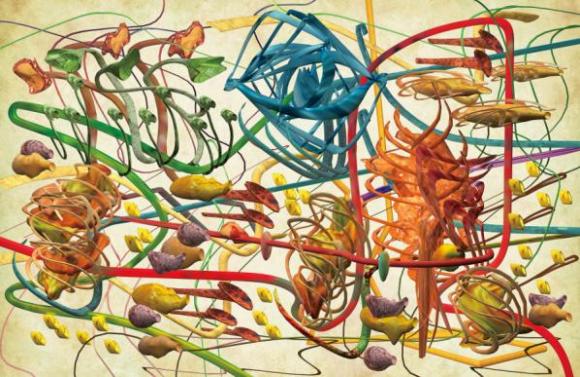
MG: Describe a real-life situation that inspired you and then describe a current idea or art work that has inspired you?
RM: I was fortunate enough to experience firsthand Hong Kong’s rapid urbanization driven by the staggering economic growth throughout 70s and early 80s. In hindsight, it could be called the beginning of rising prosperity in the Pearl River Delta region. I was fascinated by the fact that both the unregulated Kowloon Walled City and the newly-built Shanghai Bank Tower stood only a few miles apart from each other around the same period. They could be seen as two sides of the same coin, as they both represented the rapid and chaotic economic growth of Hong Kong at that time. It suddenly dawned on me that the juxtaposition and coexistence of polar-opposite elements connoted both visual tension and harmony in a somewhat intriguing way, regardless of their nature, function, and field. That contradiction nurtured and defined my own aesthetic perceptions in both visual art and urban design.
MG: What’s the best piece of advice you can give to anyone thinking of starting up in the fields of art, technology and social change?
Although it might sound like a career detour at first, it is always helpful to go off the beaten path before starting out as an artist. In my case, my experience as an architectural designer and urban planner certainly helped me to break the creative mold and approach my work with a broader perspective. Even now, I still firmly believe that it is always helpful to learn and acquire the wider knowledge and skills from other fields, and that opening up your mind to new ideas will allow you to discover your own unique path in your life.
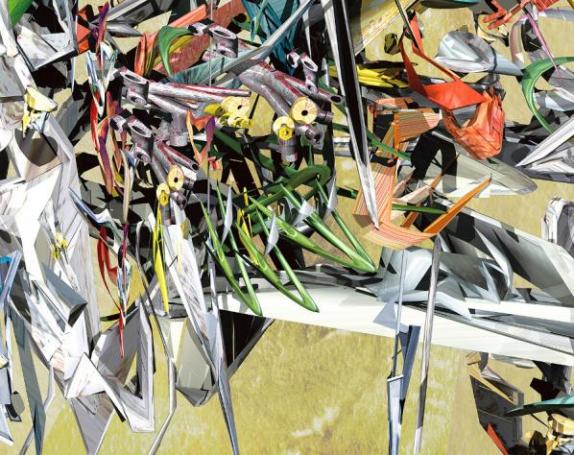
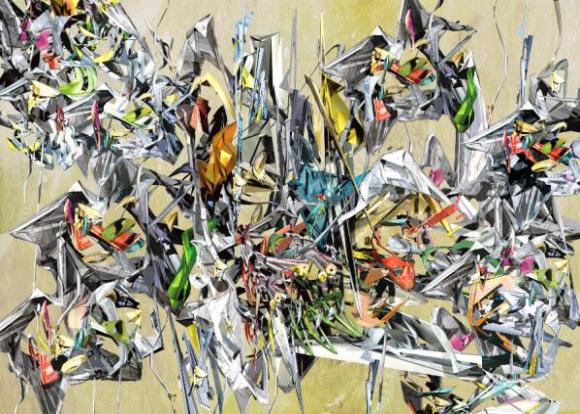
RM: Finally, could you recommend any reading materials or exhibitions past or present that you think would be great for the readers to view, and if so why?
The retrospective of Le Corbusier’s work is the last exhibition I’ve seen and it was very fascinating. He is a great innovator, who had managed to continually reinvent himself to stay ahead of the curve over the course of his life. If you are interested in 20th century architecture encompassing early modernism and the Brutalist movement, it is definitely worth visiting.
Despite its image of rapid technological change, progress under capitalism has stalled. Spinning ever faster is not the same as going somewhere. Contemporary Accelerationism wants to take off the brakes, and it is enlisting art’s help to do so.
Taking its name (like every good movement) from one of its critics – Benjamin Noys claims credit for naming the historical tendency in 2008 – contemporary Accelerationism has both a philosophical and a political form with the latter only weakly related to the former. What Epistemic (philosophical) and Left (political) Accelerationism have in common is an attitude of “prometheanism”, of amplifying our capabilities, of rationally overcoming intellectual and material limits. Of hacking the systems of philosophical and political thought to find the exploits that will allow us to increase our knowledge of them, our control of them, our reach through them. Hopefully this will work out better than it did for the original Prometheus of Greek myth (or for Ridley Scott).
Contemporary Accelerationism may seem heretical compared to the “folk politics” and philosophy that it contrasts itself with but it is not (however some people may start essays) the capital-intensifying Accelerationism of 1970s continental philosophy or its killer-robot-welcoming successor in 1990s cyberculture. From the point of view of the former it is too immediately critical of capitalism and from the point of view of the latter it is an off-ramp on the road to the singularity. It is also not the pure speed of Paul Virilio’s dromology, or the experience of lack of time of the overworked neoliberal subject.
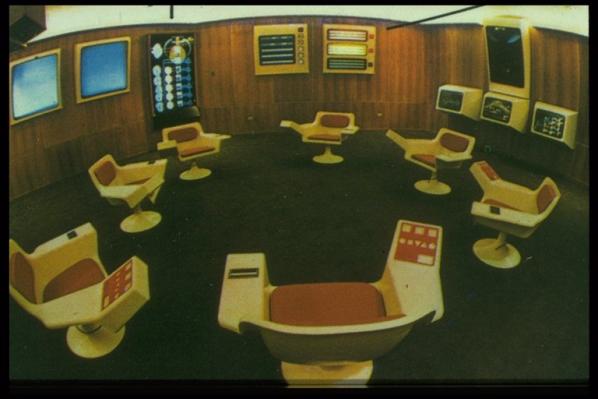
Accelerationism is a progressive attitude towards the liberation of reason and production – and therefore selectively technology – rather than the fetishisation of them. The “real” accelerationists in these senses aren’t working at Google, although they might in time exploit technology developed there. Chile’s early 1970s Cybersyn project provides an informative precedent. It sought to accelerate transition to a socialist economy using limited and almost obsolete mainframe and teleprinter technology. Its Accelerationism lay in the attempt to rationally analyse and spur growth in industry to increase the rate at which it developed, not in technofetishism.
Philosophical Accelerationism is “Epistemic Accelerationism”, represented in the writing of Ray Brassier, Reza Negarestani, Peter Wolfendale and others. This is a neo-rationalist philosophy, a programme of “maximizing rational capacity” and the ability to reason about or navigate our knowledge of the world. This is a self-revising, non-monotonic, socially situated reason very different from the logicism of 20th century rationalism and its detractors (although logics have advanced considerably as well).
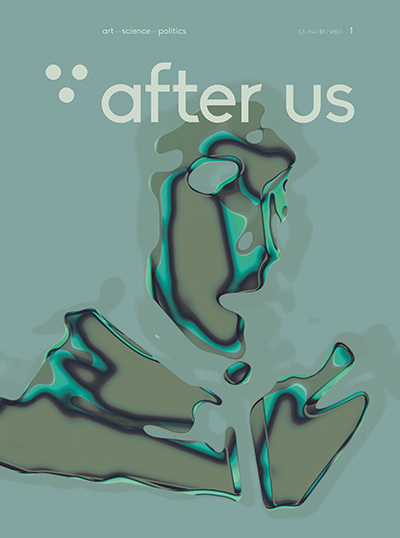
Two new journals are taking an Epistemic Accelerationist approach to art and culture. In the UK, “After Us” shares a designer with former CCRU member Kode9‘s Hyperdub record label. In France, “Glass Bead” takes its name from Herman Hesse’s imaginary game of knowledge described in his novel of the same name. Both are haunted by the legacy of C. P. Snow’s 1950s “Two Cultures” of science and the humanities, with “After Us” explicitly invoking the need to reconcile them. This isn’t the first time such a move has been called for, and previous attempts make clear that scientists tend to make as bad artists as artists make scientists. The contemporary artworld is also not under-populated by transversal and interdisciplinary research and its aesthetics. Regardless, both provide thought-provoking cultural insights and resources. And the first issue of Glass Bead features, among other articles and interviews, Colombean mathematician Fernando Zalamea, whose accessible promotion of contemporary mathematics and production of a synthetic philosophy based on it deserves much wider attention.
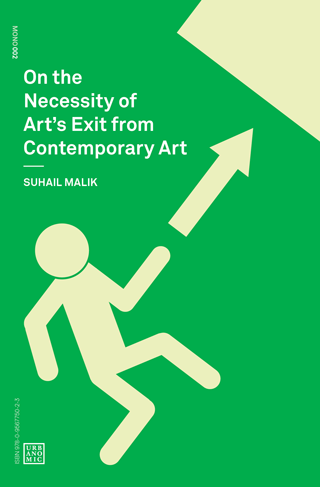
Escaping the radial velocity of asset-class zombie formalism is the focus of Suhail Malik’s “On the Necessity of Art’s Exit from Contemporary Art” (I’ll be reviewing the book for Furtherfield). Malik describes Contemporary Art’s self-image of escape (from society and art’s own limitations into a space of freedom) that disguises an inescapable and complicit recuperation of novelty. To move beyond this he proposes a strategy of exit (which contrasts interestingly with designer Benedict Singleton’s discussion of traps). This is not a seasteading-style fantasy of libertarian secession, rather it is an attempt to identify the next move in the game of art after a long impasse and to return art to a more grounded and constructive role in society.
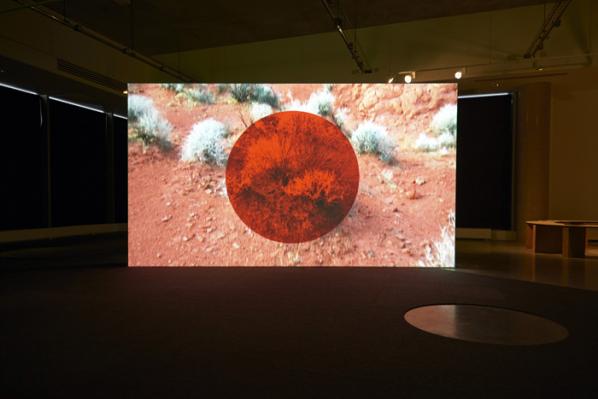
A group centred around The New Centre For Research (whose events and video archives I cannot recommend highly enough) are seeking to apply neo-rationalism to art in order to effect just such an escape from the outsideless beige singularity of Contemporary Art. This would be an art intentionally constructed to make the rules of contemporary art and of its own construction explicit, allowing artists to reason about this and to thereby come to understand how to escape the seemingly irresistible aesthetic and political cage of contemporary art. Amanda Beech‘s “Final Machine” (2013) prefigures this kind of analysis of the structure of images and their situatedness in the networks of power that produce contemporary art. Diann Bauer‘s collaboration on the art and finance R&D project “Real Flow” is another good example. Bauer has also produced videos for Laboria Cuboniks (see below) and for accelerationism-related events. Beech, Bauer and others have held a series of discussion panels on the subject of “Art and Reason” (one) (two).
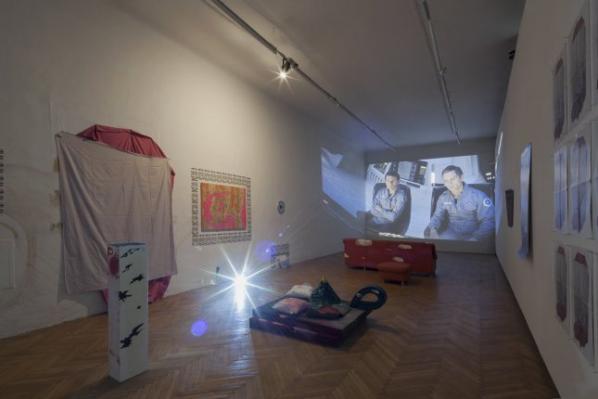
Curator and critic Mohammad Salemy has curated a series of art shows with Epistemic Accelerationist themes – “Encyclonospace Iranica” in Vancouver, “For Machine Use Only” in Vienna, and most recently “Artificial Cinema” in Prague. Each of these has created an artistic critical context for networked systems of perception and knowledge, engaging with the political possibility of their being repurposed to more emancipatory ends in the future.
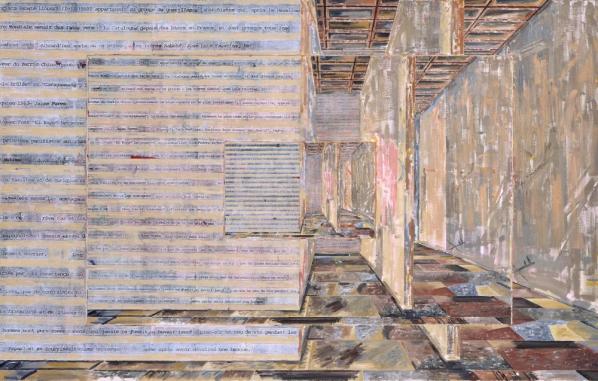
A self-aware, critical, politically committed art aware of its institutional context that is nonetheless still recognisable as art may sound like a stretch but there are precedents in the work of veteran conceptual art collective Art & Language, most obviously in their early “Index” installations and in their later “Incident In The Museum” paintings. There is another way in which Art & Language provide a precedent for the New Centre group – a decade ago they theorised genre as a means of interrupting the frictionless misrepresentations of Contemporary Art, similarly to Malik’s (and, as we shall see, Beech’s) emphasis on recategorisation.
Contemporary political Accelerationism is “Left Accelerationism”, exemplified by the writing of Nick Srnicek and Alex Williams. Initiated by the “Manifesto For An Accelerationist Politics” and fleshed out in the book “Inventing The Future“, Left Accelerationism claims that some of the technologies created by capitalism can be repurposed and even intensified to enable an achievable socialist future and unleash the creative forces in society that they currently repress. As Srnicek and Williams make clear in “Inventing The Future”, this is not in opposition to other struggles but rather a means of materially supporting them.
As a group that often struggles with basic material support, the Left Accelerationist project can hold some appeal for artists. Universal Basic Income (pursued as Srnicek and Williams propose – within rather than as a reason to dismantle the rest of the Welfare State) for example would benefit artists (and musicians, actors and other creatives) in much the same way as earlier welfare state provisions. Artists can support this, rather than having to make the specific moral case for artworld subsidies, as an effective means of solidarity.
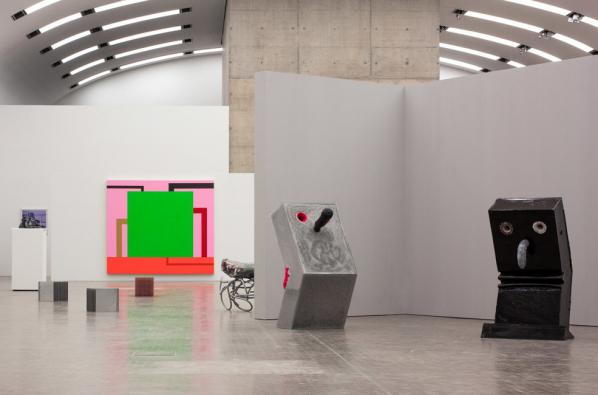
Full automation, another of Srnicek and Williams’ proposals, is the theme of the show at Kunsthalle Wien. The diverse work included drives home that art and curation needn’t be propagandistic, uncritical or overly serious to promote or engage with Accelerationist themes.
In their essay in the book “Speculative Aesthetics” (2014), Nick Srnicek proposes an Accelerationist aesthetics of transforming a “data sublime” into forms comprehendible by human beings, an aesthetic of user interface-style efficiency and transparency rather than beauty. The example Snicek gives is of transforming a complex economic model into a tool for the manipulation of economies. In the same volume, Amanda Beech (again) argues that rather than “asking what images mean, or if it is possible to mean what we say” we should produce an art that leaves behind the category of the uncategorisable in order to unravel the political project that contemporary art is subject to.
Likewise Alex Williams’ consideration of Accelerationist aesthetics in the article “Escape Velocities” (2013) emphasises aesthetics as a means of presentation of conceptual spaces, rendering them tractable to the human imagination, as well as explicitly discussing interface aesthetics with reference to Cybersyn. They also mention the concept of Hyperstition, which we will return to below.
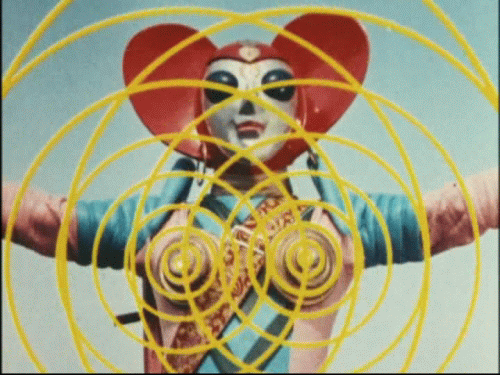
Laboria Cuboniks are a pseudonymous collective who have produced the “Xenofeminism” accelerated feminist manifesto. It’s a strikingly designed production (the website was designed by artist Patricia Reed) that is already inspiring artistic production. The “3rdspace” show describes itself as “a response to XF and an exploration into the potentials of technology to escape modern structures of control”, building on Promethean themes.
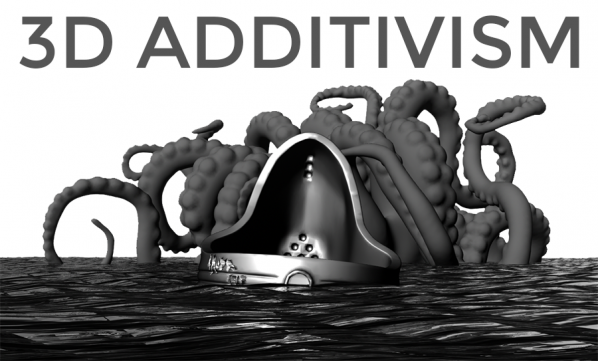
Morehshin Allahyari & Daniel Rourke have produced the Additivist Manifesto for art in the Anthropocene (the video for it features the “Urinal” 3D printable model I commissioned from Chris Webber). They “…call for you to accelerate the 3D printer and other technologies to their absolute limits and beyond into the realm of the speculative, the provocative and the weird”. This is the kind of acceleration through (and into) art that works as both epistemic and left accelerationism without merely illustrating the program of or being instrumentalised by either. It is accelerated critical theory.

And beyond the visual arts, musician Holly Herndon’s most recent album was described by collaborator Mat Dryhurst as being designed to support Left Accelerationism.
While contemporary accelerationism is at pains to signal how far removed it is from CCRU-era Nick Land (let alone their contemporary work), the CCRU’s instrumentalised mythological theory-fiction has resources that are of interest. The slippery concept of “hyperstition”, essentially self-creating science fictional or mythical entities, is key. Cyberspace is hyperstitional, as was the writing of H. P. Lovecraft, as was Neoliberalism, and the music of Hyperdub. They are all unreal entities that bootstrapped themselves into reality via the human imagination. Hyperstition is an example of rational irrationality, or at least rationalised irrationality.

Seeking to harness hyperstition for a moral or political programme has something of the air of trying to summon Cthulhu for social justice, or to turn Skynet into a phone tree, but Williams’ “Escape Velocity” mention of Hyperstition as a means of creating visions of a better future as something that will have been possible is compelling. Hyperstition should be more (mis-)used in art than it currently is, and its creation all but demands activity outside the existing artworld.
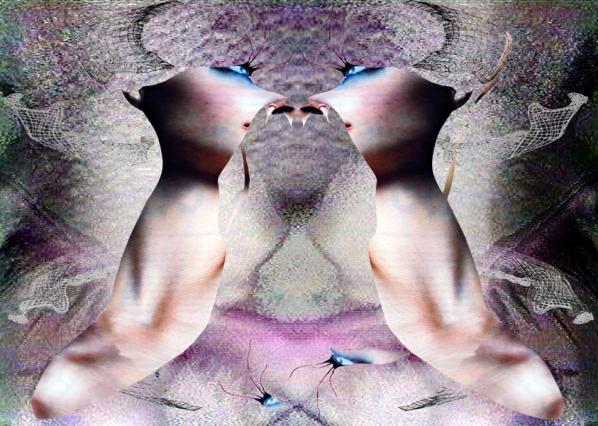
International art collective (and CCRU collaborators) Orphan Drift‘s autopoietic mythologies realised in glitch art videos, installations and writing provide a historical point of reference here.
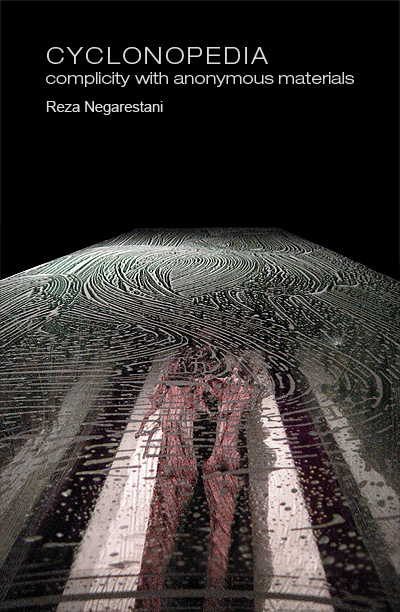
The earlier work of Reza Negarestani serves as a bridge between the CCRU era and the present. His novel of theory-fiction “Cyclonopedia“, 2008, evokes hyperstitional entities from the layers of trauma present in the politics and geology of oil and the Middle East.
In art, reason and rationality may inspire memories of dry conceptualism or stern Soviet abstraction but contemporary art’s hidden and totalising rules are no less binding and are in desperate need of exposure and critique. The task of uncovering and overcoming them presents a challenge to perception and representation that meeting will amount to much more than “art about art”. Perhaps we can use Deep Learning and neural nets to pull the ghosts of genre and medium specificity out of contemporary art then intensify them rather than make puppyslug kitsch… but that’s another story.
Left Accelerationism’s design tasks and the hyperstitional making of its future seems to have always been possible to provide more challenging alternative projects to the manufacturing of yet more zombie formalism, and as “The Promise Of Total Automation” demonstrates this needn’t take the form of uncritical propaganda.
In contrast to these approaches, I feel it’s worth asking what a direct equivalent to Left Accelerationism for Contemporary Art would look like. Which aspects of the contemporary artworld would be worth intensifying, appropriating and pushing further to create an alternative? And what would the vanishing point for such an art be in order to avoid recuperation into the generic space of Contemporary Art?
Accelerationist art is working out how to climb over the event horizon of contemporary art, helping to make a better future seem possible, analysing and transforming technocapital, and ironically intensifying the trajectories of new technology to critical excess. As the logic of neoliberalism colonizes personal space, time and identity, suggesting that we need to move faster in any way may seem perverse or complicit. Accelerationist art is part of a project to grab the wheel rather than slam on the brakes and to thereby move beyond the exhausted constraints and artistic apologetics of the logic that is eating the world.
(Updated 2016-05-18 to include more examples.)
Accelerationist Art by Rhea Myers is licensed under a Creative Commons Attribution-ShareAlike 4.0 International License.
Venue: Netbehaviour and Neterarti
Links: http://neterarti.furtherfield.org
Join a conversation about accelerationism on the Netbehaviour email discussion list and Neterarti social media platform: form 21st April – Tuesday 19th May 2016.
Back in 2013 Alex Williams and Nick Srnicek published the influential “#ACCELERATE MANIFESTO for an Accelerationist Politics” which proposes an embrace of automation and the tools and strategies of capitalism for species survival against the odds. It rejects other resistance strategies of protest, occupation, culture-jamming and strike, as outmoded and ineffective in the face of Neoliberal strategies.
The Accelerationist Reader published by Urbanomic pulls together texts and authors, new and old to elaborate and provide historical precedents and contrasts for the position. There have been many responses in Furtherfield’s own networks, including those by Rhea Myers and Robert Jackson, and more widely in academia and contemporary art practice, such as the simultaneously compelling and repulsive Additivist Manifesto by Daniel Rourke and Morehshin Allahyari.
We invite you to join an open discussion about the ideas, potentials, and political and social tensions, as a way to help bridge between academic conversations to wider practice and everyday experience.
We have invited a number people who we think are working in related areas, to join us and contribute. Please do the same yourselves.
Here on Netbehaviour we have a great platform and community for extended debate, and also we suggest http://neterarti.furtherfield.org as a parallel place for pithy summaries and illustrations (pictures and video) as a way to share key topics and themes with a wider world. As always, we aim for jargon-busting clarity. Monday 21st March – Thursday 7th April 2016.
#ACCELERATE MANIFESTO for an Accelerationist Politics
by Alex Williams and Nick Srnicek 2013
Critique by McKenzie Wark of Inventing the Future: Postcapitalism and a World Without Work by Nick Srnicek and Alex Williams
Response to Common Criticisms by Srnicek and Williams
Escape Velocities by Alex Williams